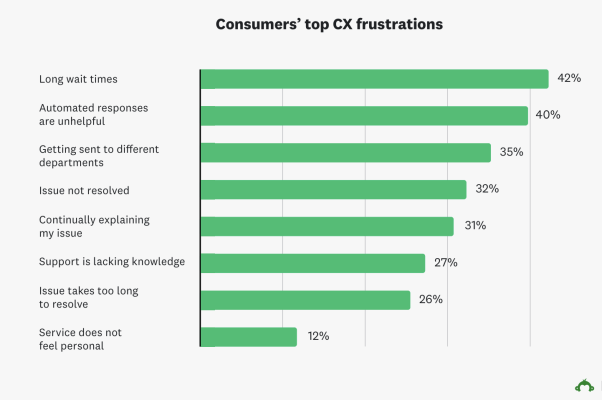CX teams have big plans this year. There's a movement to transform the customer experience with strategies like omnichannel CX, hyper-personalization, and immersive experiences. It isn’t hard to imagine how these next-generation experiences will create a new baseline for service unlike anything we’ve seen.
The question is: has anyone asked customers if that’s what they want? In the effort to create a better mousetrap, is it possible that companies might overreach what are the most practical—and effective—ways to serve their customers?
In two complimentary studies, we asked 1,006 consumers and 307 CX pros about the state of CX; their goals, expectations, and understanding of what CX should look like in the future.
While there are areas of agreement, we uncovered some pretty significant gaps between what customers want and companies’ CX plans. Here’s a quick look at a few of the most important CX statistics from our research.
CX stats point to high expectations
There’s a good reason why CX teams are trying to outdo themselves—both company and customer expectations are up significantly over last year.
Over half (52%) of CX pros say increasing performance expectations is their top challenge, an 18% increase over last year. And 54% say exceeding customer expectations is the top challenge, which is up by 9% from last year.
This increased pressure has been translated into a lengthy list of ambitious goals. When asked about priorities, more frequent and personalized outreach to customers ranked at the top.

Increasing frequency and personalization have one thing in common—both depend on harnessing data and technology. Listening to customer feedback was also a high priority, indicating that CX pros value the voice of the customer in developing their CX priorities.
Consumers weigh in on what they want
Will CX priorities meet customer expectations? Our research found that customers are asking for some pretty basic things, like shorter wait times and getting issues resolved more efficiently.

When we compared the top CX priorities against the top consumer frustrations, we uncovered the CX gap—a disconnect between what is top of mind for consumers and what CX teams plan to roll out.

Reducing the kind of “friction” consumers describe may not be as exciting as the next-generation experiences that top the list of CX pros. But, these more straightforward customer pain points clearly need to be addressed.
Digging into the data behind the terminology
The move towards automation and self-service is on the radar for both CX pros and consumers. In many areas, they are in agreement that automated responses and bots still can’t replace the need for more personalized communications.
But, it’s possible that terms like “more personalized touchpoints” and “more frequent customer communications” might mean different things to consumers and CX teams. These terms require context and companies will need to be very clear on what they’re offering. They also need to make sure their priorities are in line with customer expectations.
For CX pros, personalization is about tailoring interactions to the individual customer, at scale, by harnessing data and AI. For example, in the future, product recommendations won’t only be based on past purchases—new technologies will be able to anticipate needs based on a whole new set of factors. Time of day, location, and in-the-moment browsing behavior will be analyzed in order to deliver current content and experiences for consumers.
However, consumers have a very different view of a personalized experience, and are not satisfied with current levels of service. Almost half (45%) of consumers say their interactions with companies have gotten less personalized over the past year—which highlights another CX gap, as nine out of ten CX pros believe their customers’ experience is personalized.
It might be that for a consumer, personalization means individual attention. According to our research, consumers want their experience with a company to include tailored support at all points in the purchase process. They want to be made aware of deals on the products or services they like; or better yet, feel they are getting a special offer or product that is tailored to them.

Those are just a few of the areas where we identified a CX gap. There’s even more to learn about how the areas of alignment and disconnect between consumers and the companies who serve them. Get the full report.
Unraveling the CX gap
Customer experience stats on how consumers and CX pros differ on top priorities.



